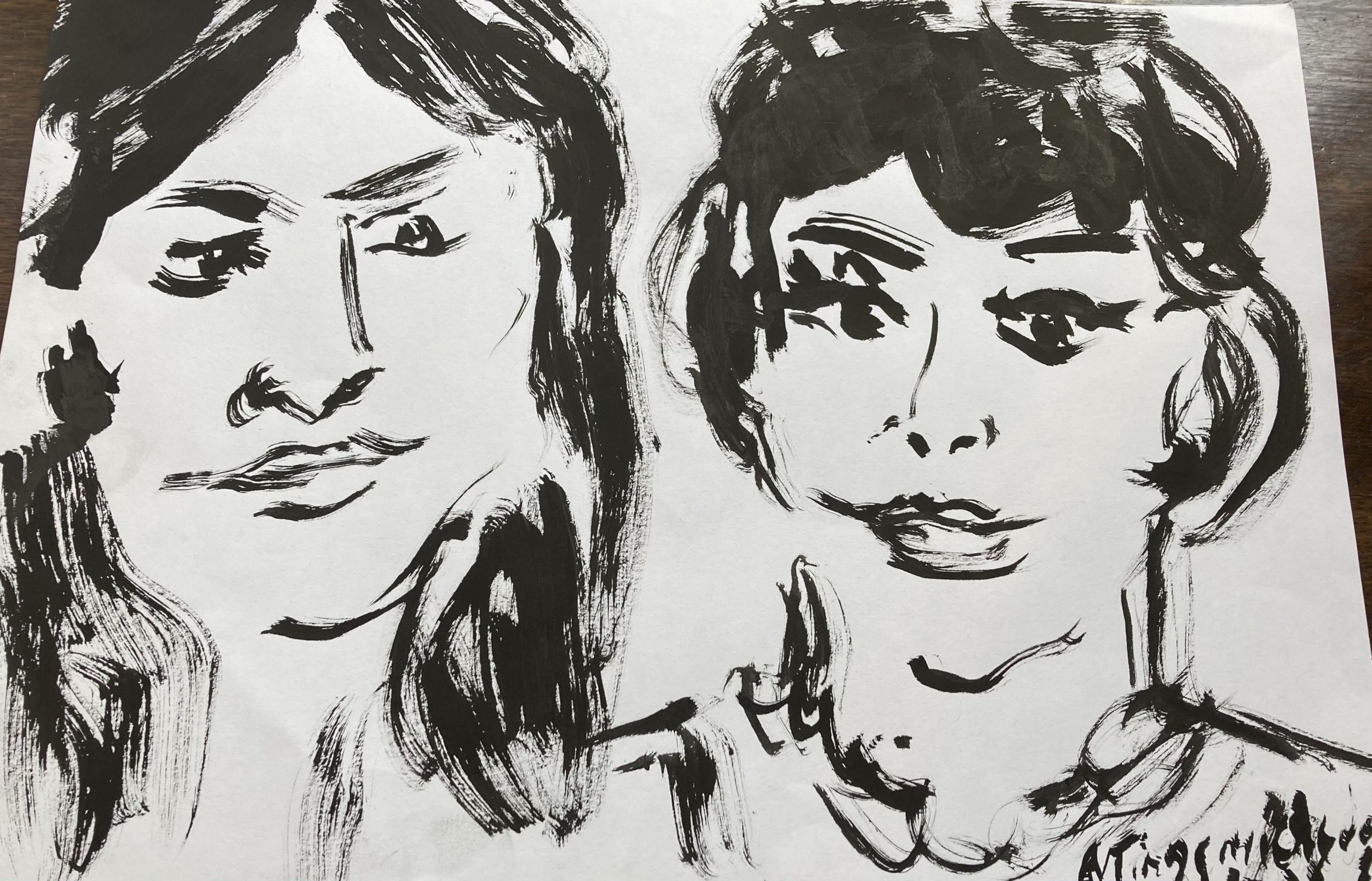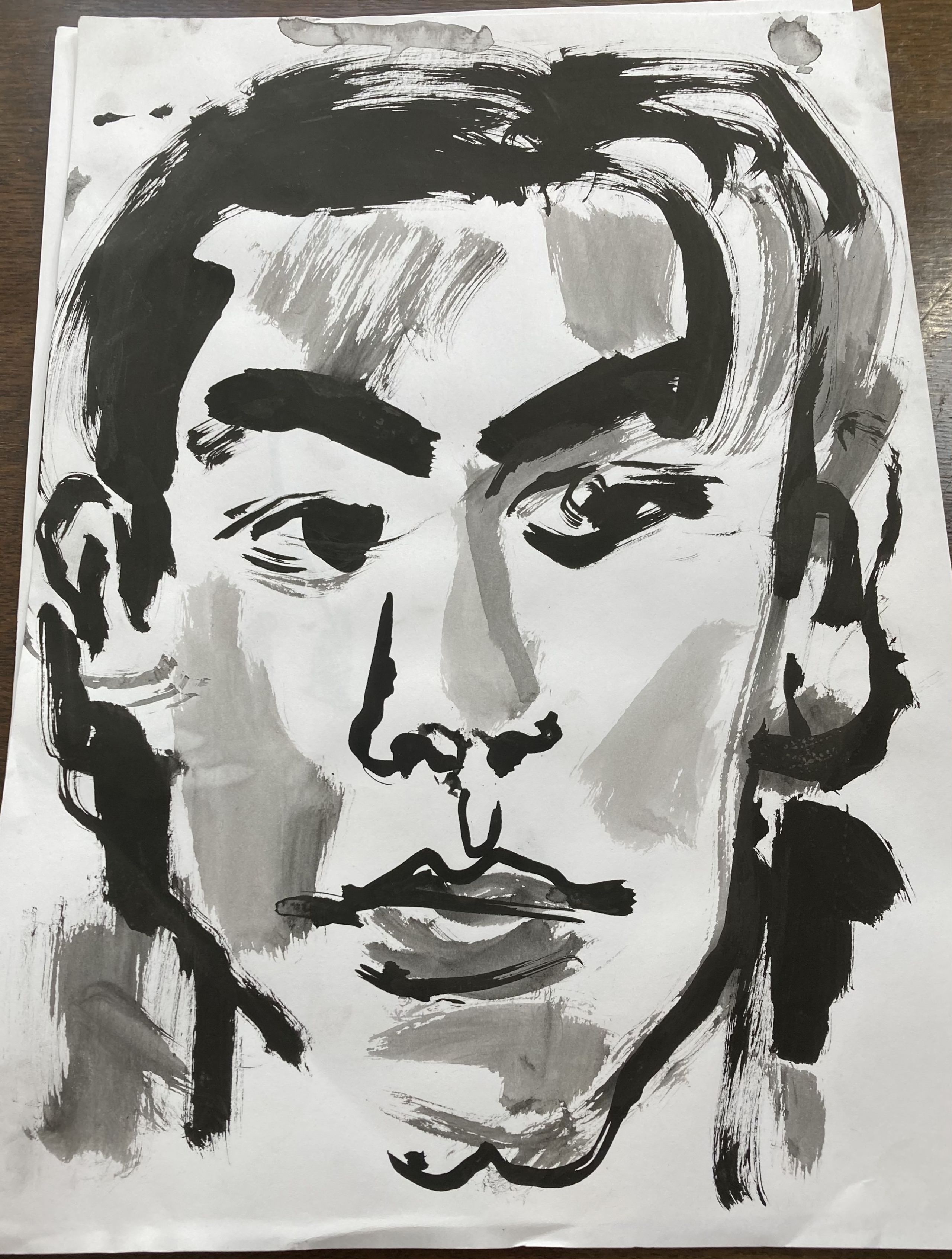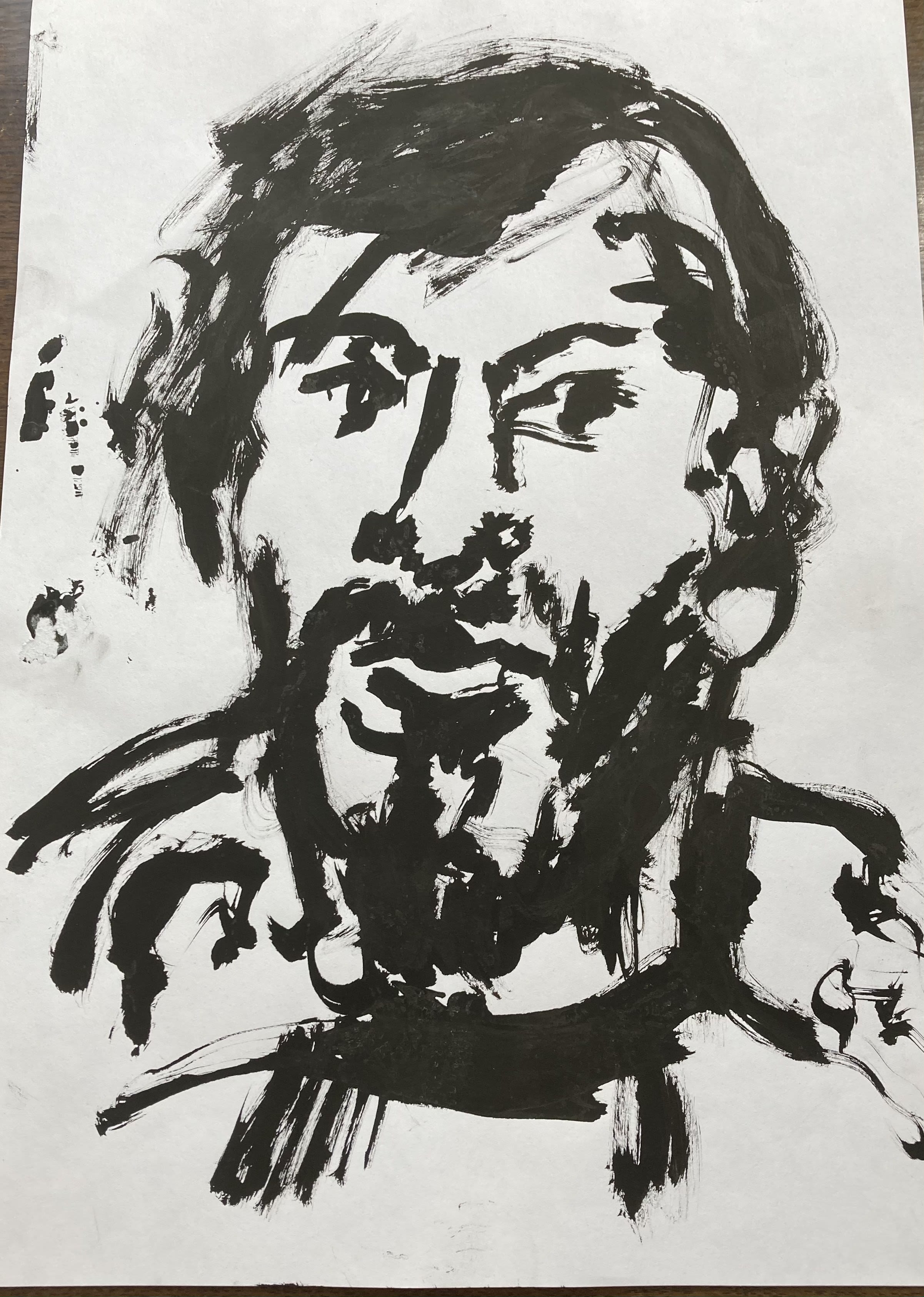Interview
with
Manchester Artist
Akinyemi Oludele
by David Adamson
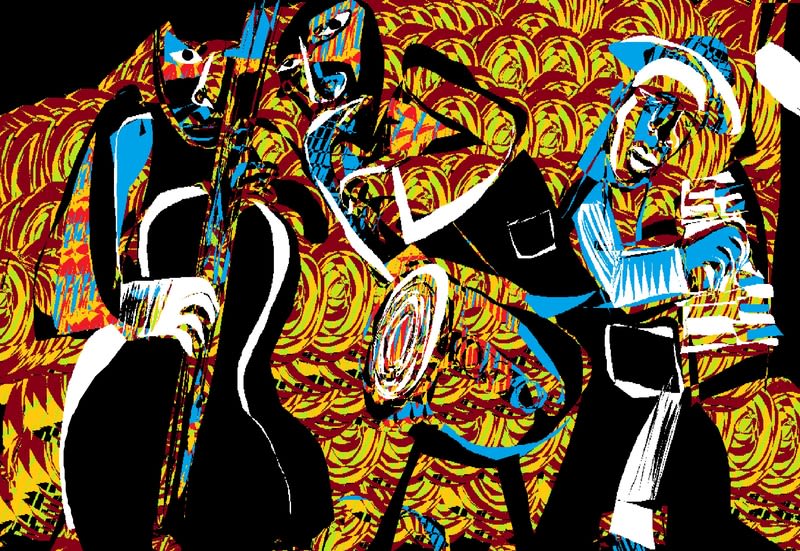
Every bar has CCTV these days, but not every one has a live-sketch artist.
Anyone thinking of robbing the Night and Day Cafe on a weekend should first consider that if Akinyemi Oludele is there, his quick-fire sketches will tell you more than most cameras.
I was drinking there one night in July when Akinyemi approached our table and handed me a sketch of myself.
We met a few weeks later in Stephenson Square to talk about art, music and movement.
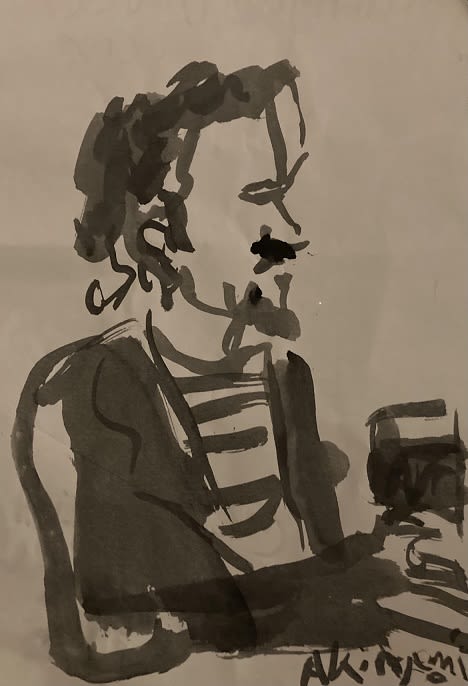
When did you start drawing?
I started doing cartoons from about seven. Storytelling cartoons, things that were happening around me. It would be a small, one page story about what I'm picking up from other people. When you're capturing expressions and that one story, it’s more theme-based, about catching a theme.
When I was in school in the 90s I started to get into hip hop and black history - especially the art of John T Biggers, Aaron Douglas and Jacob Lawrence - as well as making videos and getting into media studies.
I was raised into the visual arts -I have older brothers who used to draw and paint a lot - but when I was at school I wanted to get more into media studies.
I think it was through the hip hop era that I started to change how I saw things. You start to create work about experiences, and base the pictures around that. You'd hear about Malcolm X or MLK and you would create work about those things.
I expressed myself through cartoons but you wouldn't really express yourself in terms of the difficult things you saw or things you went through.
I only started to realise as I got older that you can express those things as well.
There wasn't that free expression. You were taught to paint flowers and scenery, but you couldn’t really paint what you feel. Even with music, you couldn't express yourself and the things you enjoy.
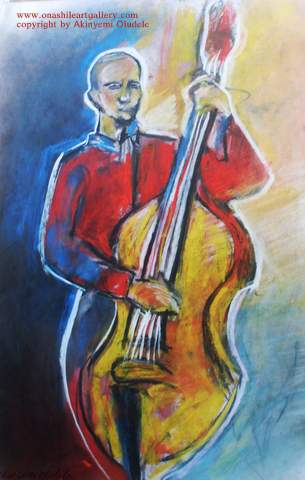


Tell me about your style and method of working
I like to create work to music, and music is like a spider web, each strand is to a beat. When I listen to jazz, or any fast music, I draw in relation to the sound.
I start from any place on the page. Certain expressions will have more rhythm than others. You can be drawn to some visuals more than others, and that visual can carry a lot more rhythm or expression.
When a musician is playing it's usually the sound that's the focus, but you could absorb the guitar string, or the person playing the drums, or certain bright things.
When I draw musicians I draw the figurative things I'm seeing in the same way, because everything has a kind of pattern or rhythm, whether it's a still image or music.
A lot of what i do, recently, is drawing something while i'm half-looking, so that when I'm drawing I'm doing it without looking, I'm just feeling the rhythm. Closing my eyes, I find that I’m tracing.
And what you’re seeing in your head is corresponding in scale and proportion? Is that intuitive?
That builds up though drawing musicians, you're creating patterns. As soon as music is applied to the visuals you're creating a pattern.
Why do you think it lends itself to being paired with other art forms, especially jazz and poetry?
You can apply poetry to every line and every mark, or every measurement. With measurement, the standard method of measuring the face is you put three sectional lines: eyes, nose and mouth. But with music you can make any line you want. You can put lines anywhere you like.
It's the same thing with a circle or a square, you can apply every line logically - you have a standard - but you can create your own measurements and your own lines.
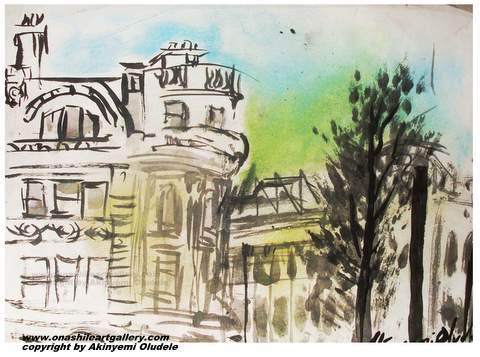


When people ‘sit’ for a painter, they’re very aware of themselves. So when they’re not aware they’re being painted - like I was - do you see any difference in their manner?
Things are what they are. It's a lot more about the music of that moment, the sound or the vibes, the expression.
It's not only about memory repeating the work, it's also about something going beyond memory; it’s expression.
When you’re live-drawing people, you don't know the time. They could go any second, so it’s about their expression as an indication of how long they're going to be there.
Like the delayed exposure on old photographs? The ghost of someone in a moment in time?
There's a guy behind you. He’s rubbing his hands together, and I look down and see his cup is empty, and I know he's rubbing his hands together because he's soon to leave. So I could draw him rubbing his hands together, but I won't be able to catch him after that.
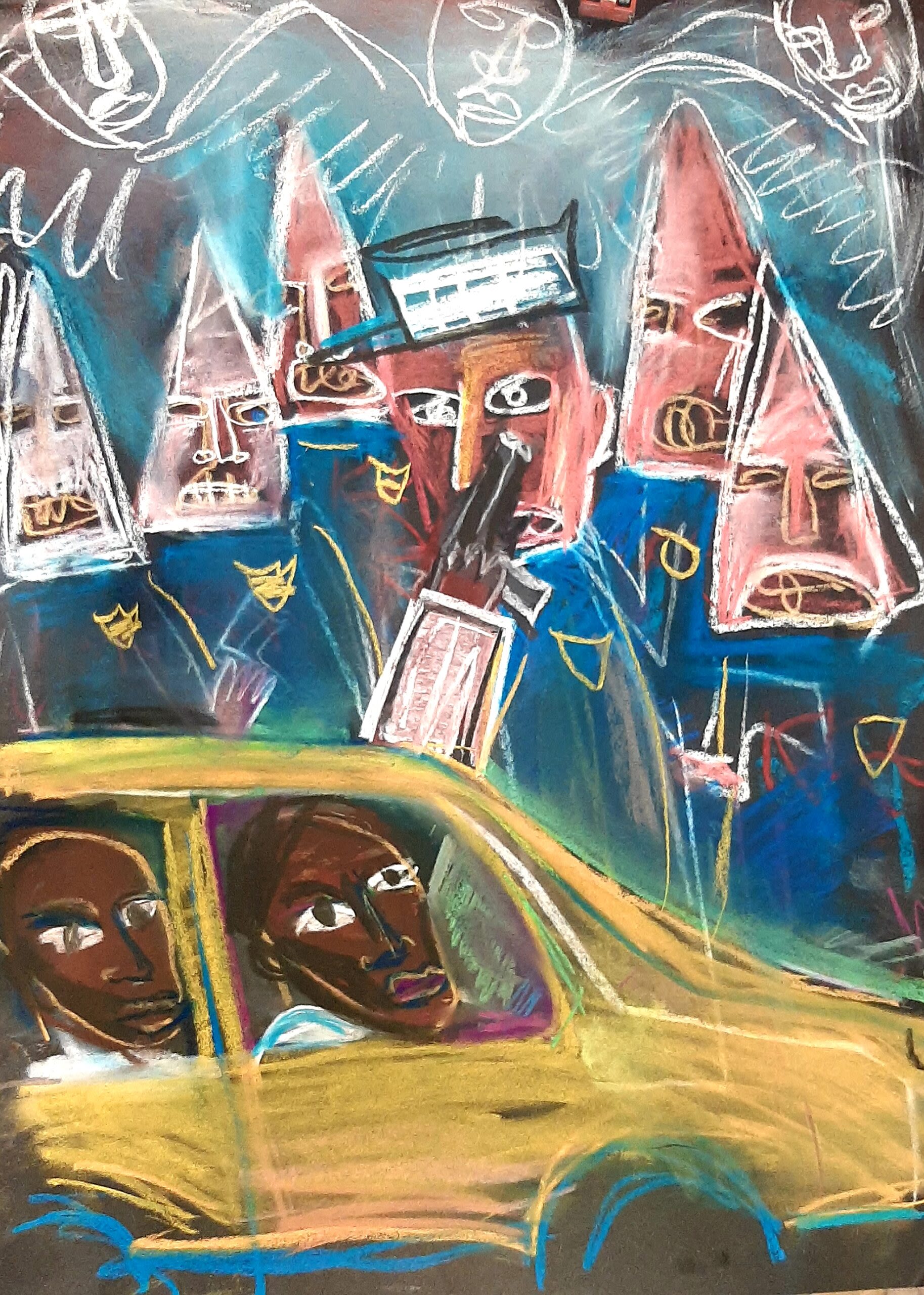


Do you get a sense of time from people, and read that timing in the same way you would music?
You never know. With still life - people sitting around - it's always good to capture the moment. Somebody could be drinking, smoking. It's better to capture that than someone sitting down. It adds more.
When I’m drawing I don't just look at - for instance -that cup, measure it and say ‘okay this is a cup’, you use sound to fit into that space and interpret it.
I’m just observant to space, what's within the space. The first time I had some drawing lessons, someone said you shouldn’t do angles. But it's important to do all kinds of angles and shapes.
Because of this relation to sound?
The sound and how you feel.
In this kind of space, my head is focused over there because they’re very loud over there, and over there it's quite quiet and here it's quite mild. You don't know where it's going to come from, and how it might inform you.
You go round and draw what you see, the music and what you feel, being in that space.
Recently I decided to bring an easel out and paint on there. The environment is a lot more refreshing outside.
There's better lighting for a start.
All images the copyright of Akinyemi Oludele
